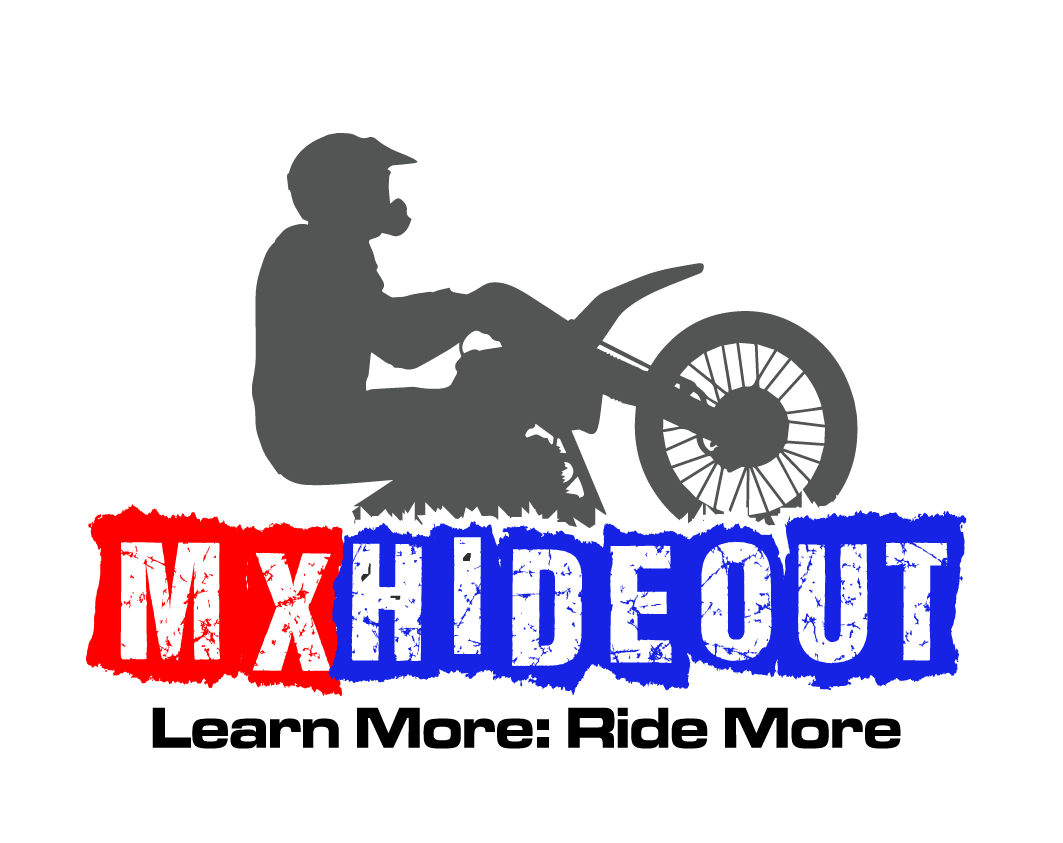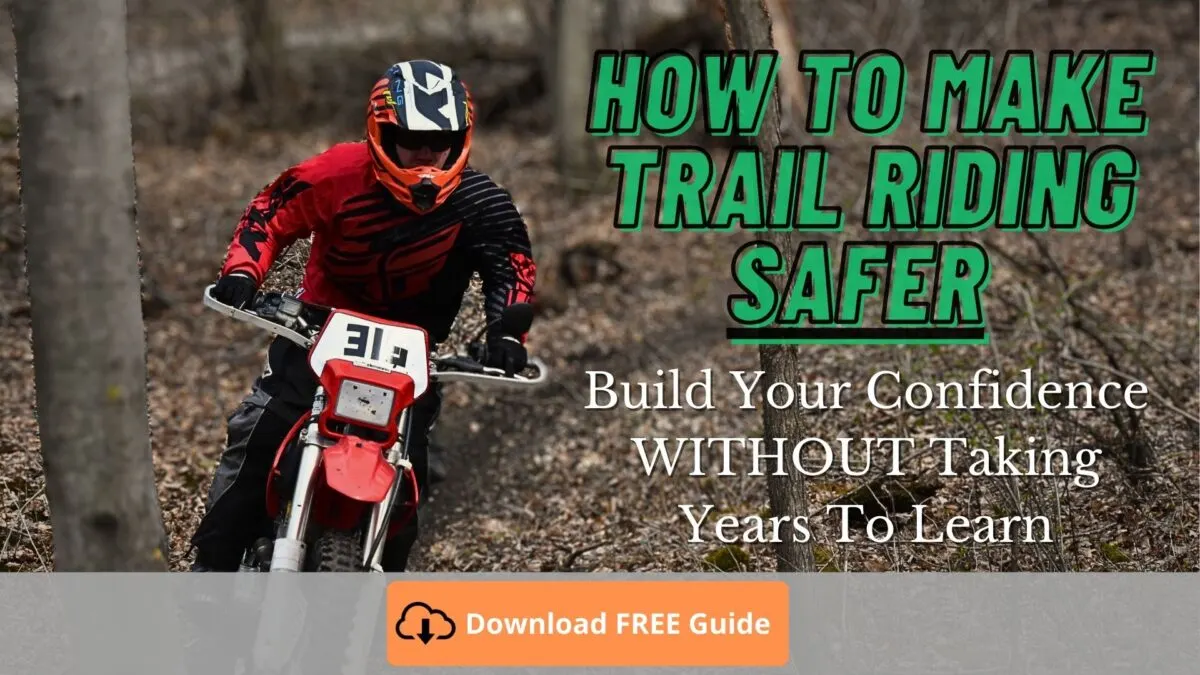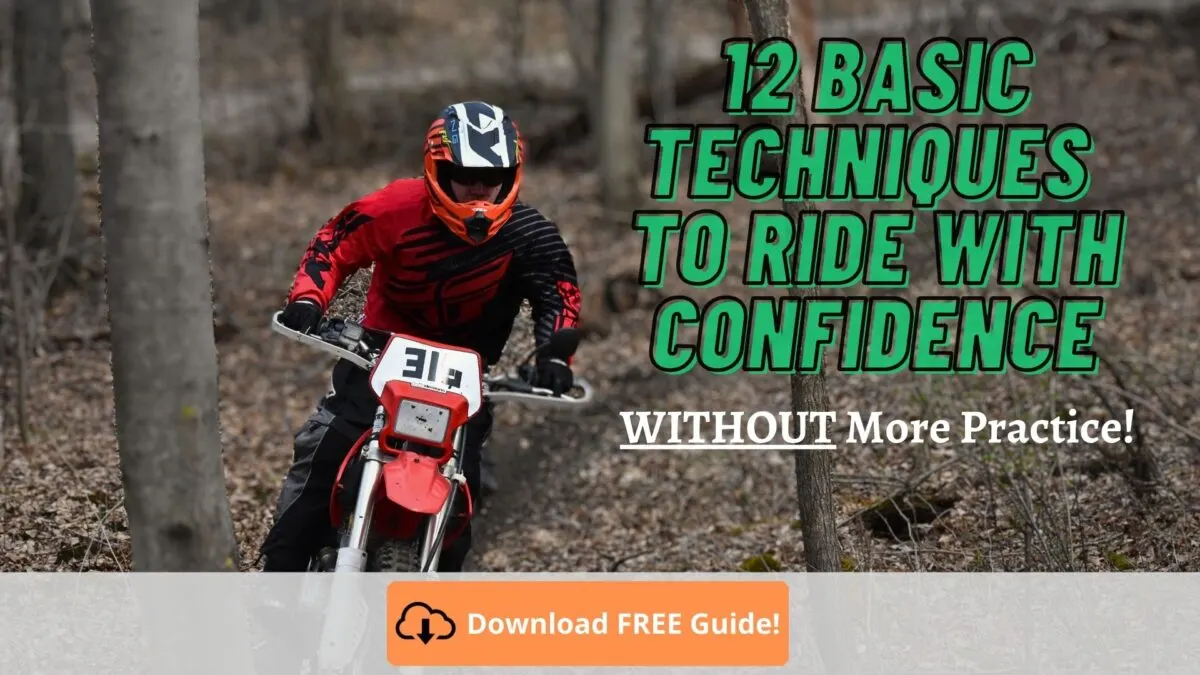Are you new to dirt biking or want to become a better rider? Riding a dirt bike isn’t that difficult, but being a great rider requires a lot of experience and proper training.
This is the definitive guide to dirt bike trail riding. You will learn everything from what bike is best for trail riding, to how to set it up for you. You’ll also learn the top riding tips to go from a beginner to a skilled and confident trail rider.
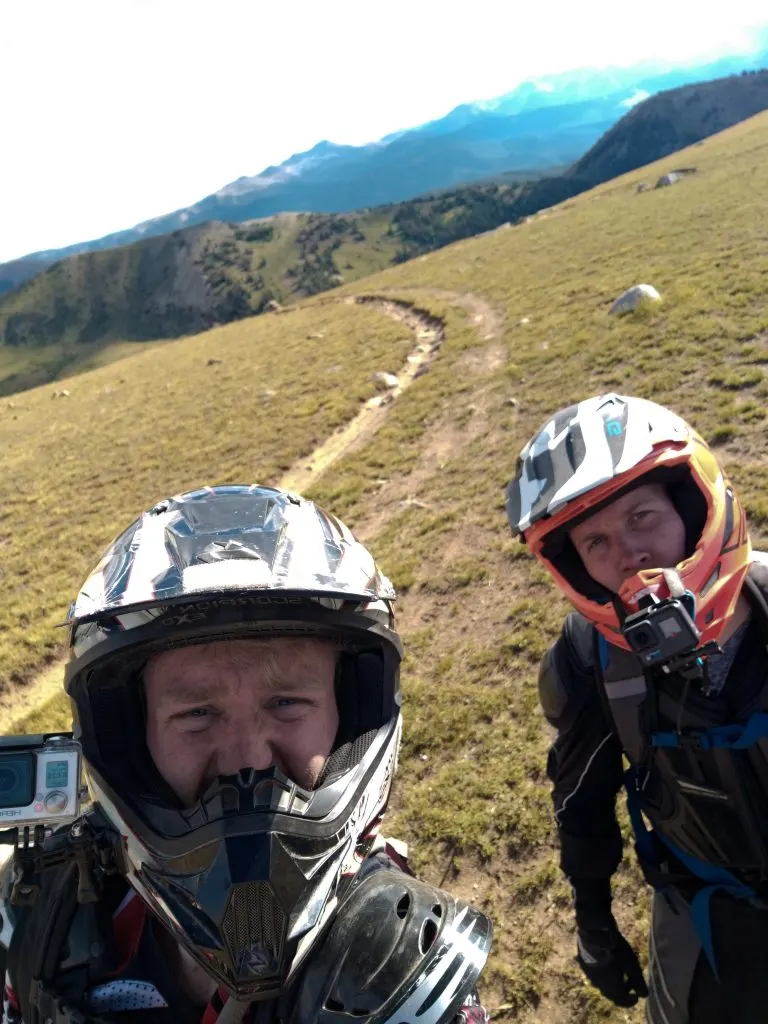
What Would I Do Differently?
If I could go back and tell myself what I know now, I would just show him this article. It has everything I would need to become a great trail rider without any “fluff”.
Trail riding is the most popular type of riding because you can simply haul your bike to the local trail and ride a loop.
I remember when I started getting serious about trail riding my dirt bike. I was on a Honda CR80R. I thought it was a sweet bike because it was so much faster than my previous XR100.
In reality, the CR80 was a terrible trail bike, but more importantly, I was an even worse trail rider.
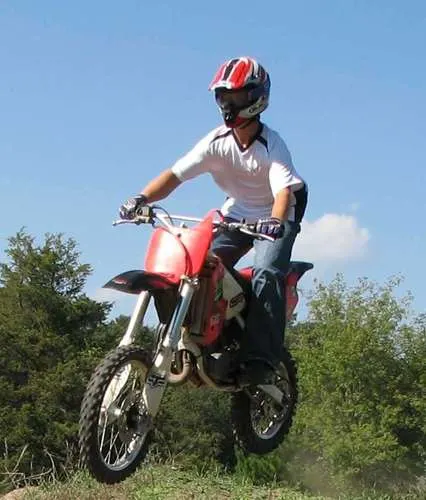
Yep, this is me back in the day looking like a complete goon on my first “race bike”. I laugh at this picture because you can just tell that I had very little riding skill and technique.
Fast forward to today and I’m still no pro, but I can ride the toughest state trails out in Colorado. (and I usually don’t look like a goon while doing it).
Top essential tips for getting faster in the woods:
- Choose the right bike
- Setting up your dirt bike
- What gear to wear
- What to bring for trail riding
- How to haul your dirt bike
- Where to ride
- Trail etiquette
- Proper riding technique
Choose The Right Dirt Bike
Are you in the market for your first dirt bike? Maybe you already have one and aren’t sure if it suits your needs. Any dirt bike can be trail ridden, but some bikes make it easier to ride.
What Is The Difference Between A Trail Dirt Bike & A Motocross Dirt Bike?
Any dirt bike can be ridden off-road, so why not just get a cheap motocross bike to start out? They’re fast, have great suspension and performance, so what could go wrong?
Well, there’s a reason there’s more than one model of dirt bike available per size or class of bike. Motocross bikes have a lot of differences compared to a bike built for trail riding.
The biggest differences between a motocross bike and a trail bike are:
- Engine/power
- Suspension
- Transmission gearing
- Lights/accessories
What’s Wrong With A Motocross Bike?
A motocross bike is tuned for high RPM horsepower because that’s where it’s built to be ridden. The power curve is sharp and abrupt compared to a trail bike, making it more difficult to ride on a tight trail.
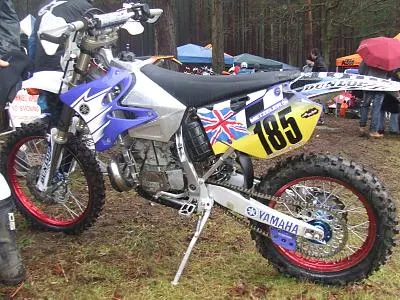
Close Gearing
The transmission on an mx bike is close together. This means that there’s only a small drop in RPM each time you shift a gear. This is great for accelerating to a high speed quickly, but makes for less usable gearing. In other words, you’ll need to shift up and down more often.
First gear is also pretty tall, which means that you’ll have to use the clutch a lot if you do slow and technical trail riding.
Stiff Suspension
The suspension is a story in itself. Motocross suspension is engineered to absorb big impacts at high speeds, so what does that mean for trail riding? Ultra stiff.
Why is stiff suspension bad for trail riding? It makes for a harsh ride that doesn’t corner well. Any small bumps, rocks or roots will feel a lot bigger and kick the bike around because the stiff suspension won’t absorb them.
Don’t Ride At Night
Lasty, if you want any kind of lights or electronics, you’re extremely limited. Even with an upgraded stator that puts out more watts, most motocross bikes can only handle a low wattage head and tail light.
Can I Modify My Motocross Bike For Trail Riding?
An mx bike can be modified to perform better on trail, but how much time and money do you want to spend?
Suspension is the first thing I would do to get a more comfortable ride. You can’t do much to the close ratio transmission (aside from a major overhaul swap), but a simple gearing change with sprockets can make a big difference.
In the end, you’ll have to put at least a few hundred dollars or more into your race bike to make it comparable to an enduro or trail bike for riding trails.
2 Stroke Vs 4 Stroke
When considering what trail bike to buy, you must decide on a 2 stroke or a 4 stroke. The differences aren’t quite as big as they used to be, but each bike has its own characteristics.
2 strokes are generally assumed to be more “snappy” and “peaky”. However, modern 2 strokes can be tuned to have very smooth and predictable power. A broad powerband makes for a great, easy to ride trail bike.
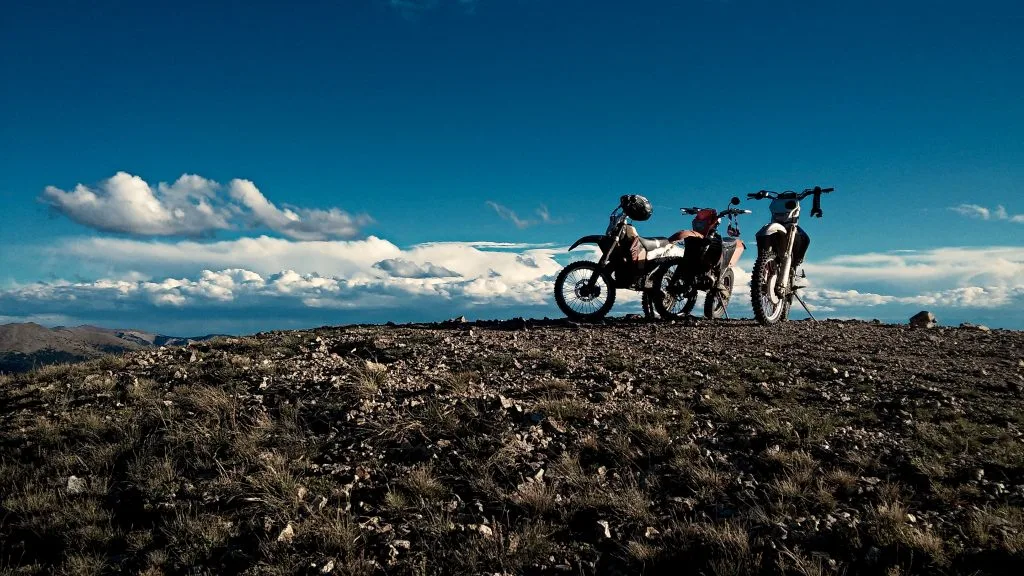
Depending on which brand and model 2 stroke you are looking at, it may or may not require premixing of gas and 2 stroke oil. This is a minor inconvenience, but one nonetheless.
Liquid-cooled 4 strokes have grown leaps and bounds in the past 25 years. They are much lighter and faster, yet surprisingly reliable if you regularly maintain it.
Main differences between 2 and 4 stroke:
| 2 Stroke | 4 Stroke |
| Premix may be required | Broad power |
| They smoke a little bit | Can be harder to start |
| Lighter feeling | More engine braking |
| More “exciting” to rideCheap to rebuild | More complex engines |
What Size Dirt Bike?
Now that you’ve figured out what kind of trail dirt bike you want, it’s time to decide on the size.
There’s so many models available that it’s hard to know which one is best for you.
If you’re new to riding or still a beginner, then a smaller bike that’s easier to ride will be your best choice.
Is A 450 A Good Bike For Beginners?
A 450 is the wrong bike for a beginner just starting out. It’s simply way more power than necessary and will only get you into trouble until you are an expert level rider.
What’s The Best Beginner Trail Bike?
A 125-250cc dirt bike is what you should be considering. An air cooled 4 stroke, such as a KLX230R or CRF250F is a great beginner bike. They’re easy to start, the power is smooth and soft, and they’re very reliable.
A 150 or 200cc 2 stroke is a nice step up in performance while still being manageable.
This chart shows a general guide for dirt bike sizes according to your height, but it’s not a strict chart. Just use it as a guideline and starting point.
What Dirt Bike Is Best For Trail Riding?
There’s so many dirt bikes available, especially if you consider older models that aren’t available anymore. So, where do you start?
First, you should figure out whether you want a 2 stroke or 4 stroke. There’s more 4 stroke models that are beginner-friendly for new trail riders, but there’s still some 2 stroke bikes that are easy to ride with smoother power.
The best 4 stroke dirt bikes for trail riding are:
- Honda CRF250F
- Yamaha WR250F
- Honda CRF250X
- KTM 250XCFW
- Yamaha WR450F
The best 2 stroke dirt bikes for trail riding are:
- KTM 150XCW
- Beta 200RR
- Yamaha YZ250X
- KTM 250XCW
- Husqvarna TE300
Setting Up Your Dirt Bike For Comfort & Speed
Any dirt bike that you choose will need to be set-up for you to get the most out of trail riding.
Have you ever hopped in the driver seat of a car and felt the need to re-adjust everything to fit you(seat, steering wheel, armrest, mirror, etc)?
That’s how it should be with your dirt bike.
Bars/Controls
Don’t go out and buy a set of handlebars or risers before trying to adjust your current ones (unless they are bent).
Ideally, you want your handlebar to be comfortable to hold when in the “attack position”.
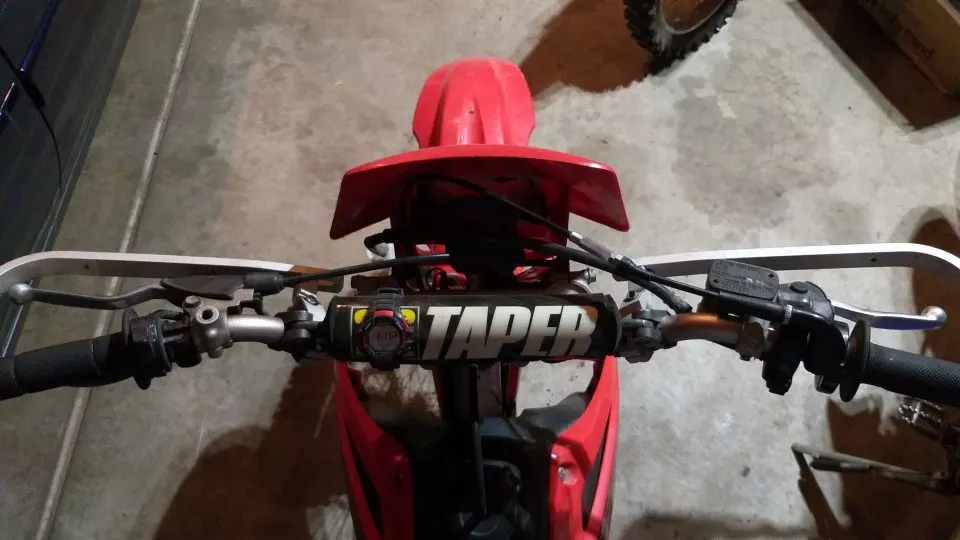
Rotate them forward and see how you like them. If it’s worse, then try rotating the bars back towards you and try again. Trial and error is the best way to test and tune your setup. You don’t know how something will work until you try! It only takes a minute or two to adjust, and you can always go back to your original setting.
Control Levers
The next step is setting the controls. The brake and clutch levers should be close to parallel with your arms when you’re in the attack position.
The brake pedal usually works well when it’s at the same height as the footpeg, but it doesn’t hurt to adjust that higher and lower to find out what you like best.
Suspension
The next most important thing to setup is your shock and forks.
First, you should have the correct spring rate for your weight. Springs that are too stiff or soft cannot be easily fixed with different valving. The springs are also the most important part of setting your ride height, which is the next thing you need to do.
Setting the ride height (sag) is to balance out your suspension. A balanced bike is a good handling bike.
There is no perfect number for the ride height, but 100mm (4″) of sag on the rear shock is a good starting point.
If you feel that the rear is riding too low, change it to 95mm and ride it again. Too high? Try 105mm and feel the difference it makes.
What Gear Do I Actually Need?
No one wants to crash, but it’s going to happen sooner or later when riding a dirt bike.
It could be a simple tip-over when you come to a stop, or it could be hitting a tree while trail riding. Either way, having the right protection will literally save your skin.
A bruised rib might just be a sore chest for a few days if you wear some lightweight body armor.
Yes, the more gear you wear, the more restricted you might be, but just wearing the minimum amount of riding gear will be worth it in the long run. After a few hours you will hardly notice the protection anyway.
The pieces of gear that I would consider to be the absolute minimum to wear for riding a dirt bike are:
- Helmet
- Boots
- Eye protection
- Pants
- Long sleeve shirt
- Gloves
- Chest protector
Off-road Helmet
Helmets have come a long way in the past 20 years as far as technology. You can easily spend 400-600 or more on the top dirt bike helmets. However, the price doesn’t always reflect how it will protect you.
Choosing a lightweight helmet that properly fits you are the most important factors. You can buy a pretty good helmet for under 150 bucks.
Dirt Bike Riding Boots
Once again, you don’t need to spend mega dollars for the best riding boots. A pair of boots under 200 will do a great job of protecting your feet and ankles.
Tennis shoes, flip-flops or even work boots just don’t cut it. Off-road boots are specifically designed to protect you when you crash.
The soles are extra thick and tough for standing on the sharp footpegs. The body is ultra rigid so that your feet don’t get twisted, which can happen just from tipping over and your bike landing on you. New riding boots are usually stiff when new, but after breaking them in they are comfortable to wear and won’t restrict you.
Most riding boots also have a leather heat-patch on the inside of the calf to keep heat from the engine and exhaust out.
What Kind of Eye Protection?
Eye protection is a small, but essential piece of riding gear. This is especially true when you’re riding with someone or if the terrain is dusty.
Some cheap motorcycle glasses can work if there’s no dust or mud and you’re just trail riding.
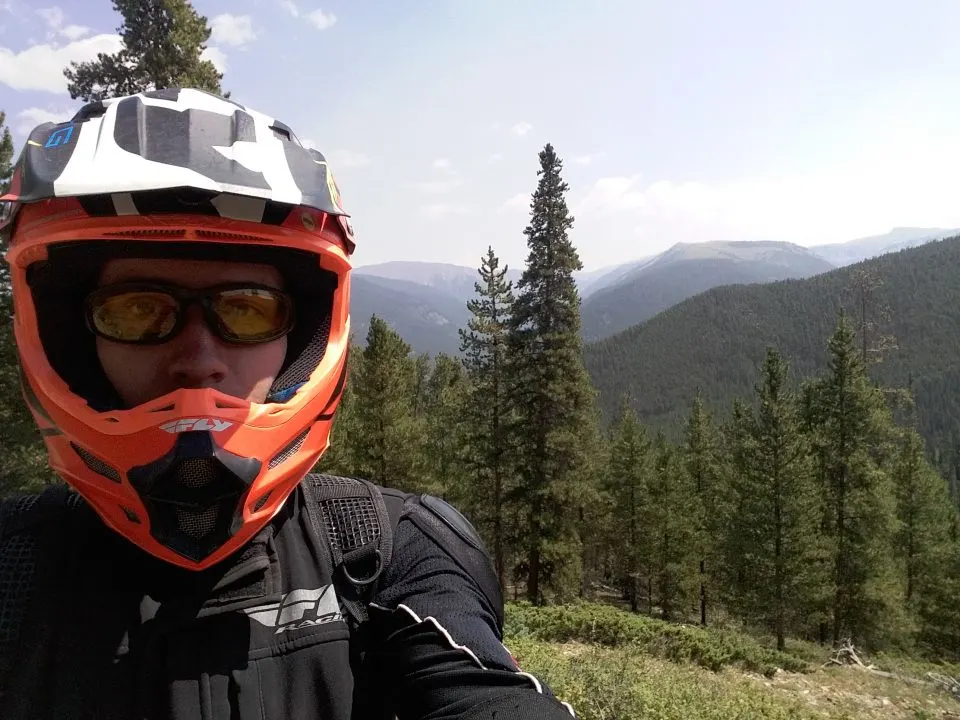
Actual dirt bike goggles do a better job of sealing out the dust and mud. Upgrading to a pair of goggles that accept tear-offs are essential for racing or riding in rainy or dirty conditions.
Do I Need To Wear Dirt Bike Pants & Jersey?
You do not need to buy new dirt bike pants and a jersey to be safe. Are they the most comfortable protection? Yes, but it’s okay to wear a long sleeve shirt and some rugged pants or jeans.
A dirt bike Jersey is actually pretty fragile, but it is very breathable. You will sweat a lot more if you wear a typical hoodie.
Riding pants are considerably tougher, but they can be easily ripped as well. Off-road pants usually come with a small amount of padding around the hips and knees, as well as some heat protection down on the valves.
Why Do Some People Not Wear Gloves?
It’s beyond me why some dirt bike riders don’t wear gloves. Decades ago gloves used to be bulky and uncomfortable, but not today. Not only do gloves give your hands a barrier to help prevent road rash, but they do a good job at reducing blisters from holding onto your bike.
The most important factor is that your gloves properly fit you. If they’re too loose, they will wiggle around, which can result in a blister.
Protect Your Essentials
Besides your head, your stomach and chest are the most important areas of your body that need protection.
Other Recommend Gear
I’ve been using body armor for years on a lot of my rides. It covers virtually every area on my torso and arms that are commonly impacted when I crash or hit something while riding.
Does it feel bulky?
Honestly, it did at first, but after getting used to it, I don’t feel that it gets in my way or limits my mobility.
Does it get hot?
Yes, but only on the hot and humid days when I come to a stop. As long as I have air flowing past me, the body armor breathes well and keeps me cool.
Knee guards are also smart if you ride in rocky terrain or in the woods. They don’t have to be anything special. Just some added padding that are worth their weight in gold when your knee smacks a tree or your handlebars.
What Else Do I Need To Bring For Trail Riding?
It’s smart to bring some extra tools and a spare tube if you’re going on a long or extended trail ride.
A backpack, fanny pack, fender bag, or gas tank pack can be used to hold your tools, spare parts, hydration pack, and snacks.
My top tools to bring on a trail ride are:
- Multi-tool
- Zip-ties
- T-handle
- Tire spoon wrench combo
- Spare front tube
- Hand pump
- Tire pressure gauge
- Spark plug wrench
- Spark plug
What’s The Best Way To Haul My Dirt Bike?
If you’re new to dirt biking and are on a budget, the best way to haul your dirt bike is to use what you have first.
Hauling With A Truck
A pickup truck is super convenient and easy to haul your bike and gear in. You just need a ramp to load it.
You can also tow a different types of dirt bike trailers based on your specific needs and budget
Hauling With A Car?
Only have a car? A cheap hitch and a lightweight single rail hauler is an easy and relatively affordable way to go. Plus you keep the gas mileage of driving the car when not hauling your bike around.
Hauling With An SUV
An SUV can also haul a dirt bike with or without a trailer, depending on its weight capacity on the hitch.
A motorcycle hitch carrier is an efficient way to haul your dirt bike without pulling a trailer. It’s easy to load your bike and it’s compact. Just be sure to check if your vehicle, hitch, and bike carrier can handle the weight.
Where Can I Legally Ride My Dirt Bike?
Riding in a backyard can be one of the best places to learn how to ride because you don’t have to haul your bike anywhere.
Unfortunately, it’s illegal to ride in many areas and neighborhoods these days.
So, where can we ride our dirt bikes?
State Trails
Nowadays the best place to ride in most areas are state trails. They have designated trails for OHM (off-highway motorcycle) only.
You can ride on many double-wide (ATV) trails, but they aren’t nearly as fun and you have to deal with a lot more traffic and dust.
Required Equipment
Basically every state trail in the United States requires you to have a DNR trail sticker on and for your dirt bike. This shows that you registered your bike for trail riding and it covers the cost of maintaining the trails (trail work isn’t free!).
Most, if not all, trails will require a USFS-approved spark arrestor to be legal to ride. A spark arrestor is a screen or device in the muffler that prevents a spark from escaping from it.
Trail Etiquette – You’re Not The Only One
Now that you’re ready to ride some dirt bike trails, I need to inform you of some proper trail etiquette.
How Do You Ride A Trail On A Dirt Bike?
I’m all for safety and trying to keep our public riding areas open. In order to do that, there’s some rules we have to follow, even if you think they’re dumb or pointless.
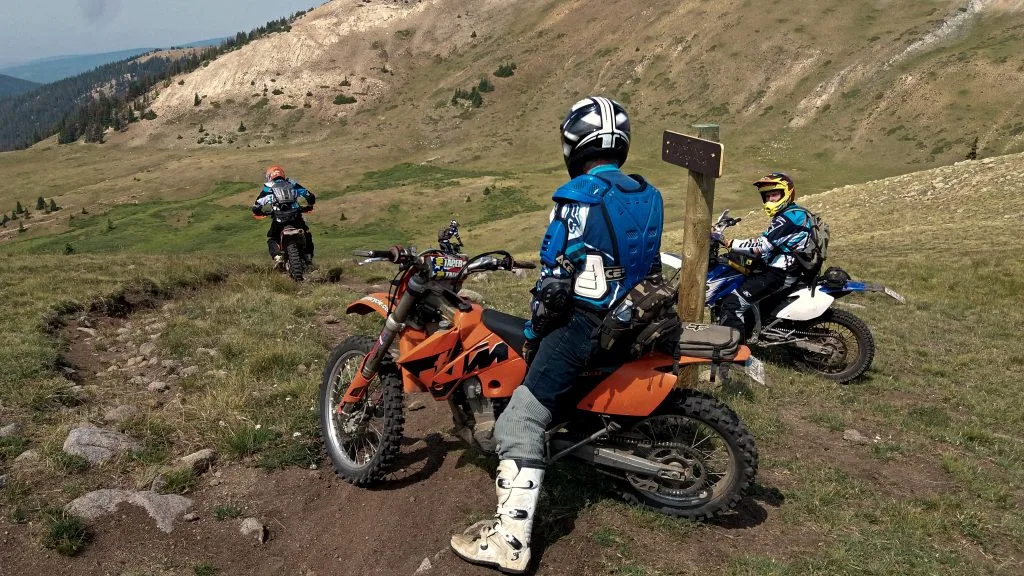
All it takes is one bad egg (rider) to ruin our reputation or riding spot, so that’s why I take this so seriously.
So, just follow these simple steps for trail etiquette and you should be having fun and not get yelled at:
- Read requirements of each state park/trail you ride before riding there
- Make sure your bike is legal (trail sticker, spark arrestor, etc.)
- Follow trail signage (1-way vs 2-way trails)
- Learn proper hand signals and use them every time you pass someone
- Always be on the lookout for others and oncoming traffic
- Pick up after yourself where you park or camp
How Can I Get Better At Riding My Dirt Bike?
Confidence is key when it comes to riding a dirt bike. For you to be confident and safe, you need to have some proper technique.
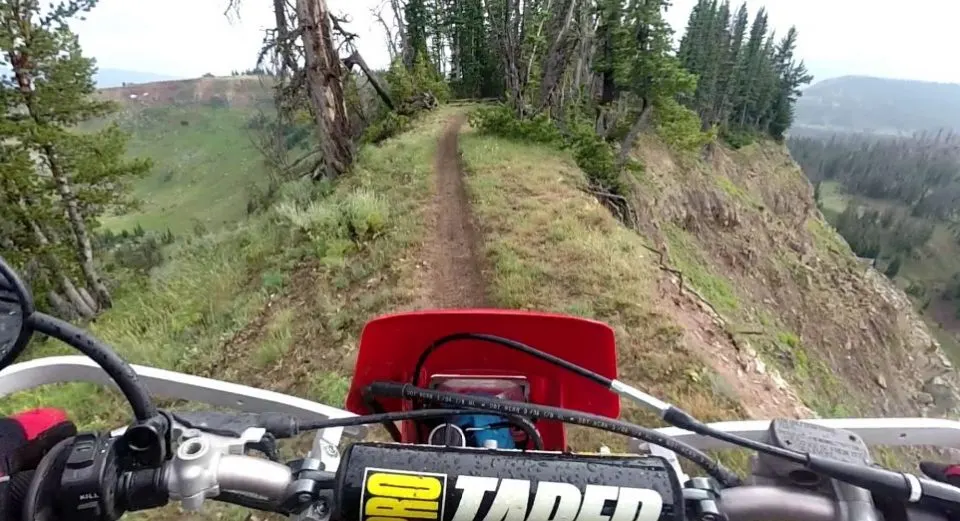
Here are my top tips to build your confidence and get better at trail riding a dirt bike:
- Look ahead
- Clutch control
- Stand up when possible
- Practice no brakes for momentum
- Finger on brake and clutch
- Efficiency: less shifting, practice clutch in corners
- Smooth throttle for traction and endurance
For more in-depth training to become a better trail rider quickly click here.
